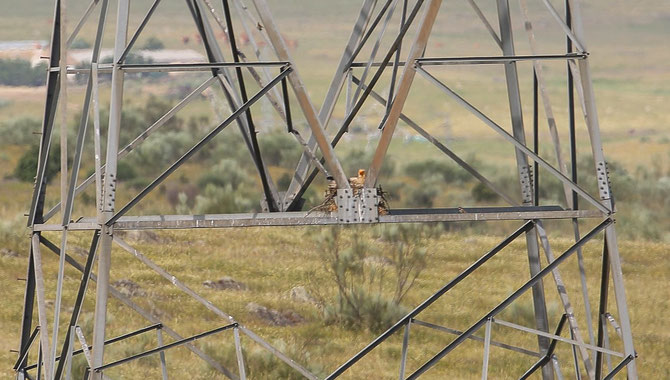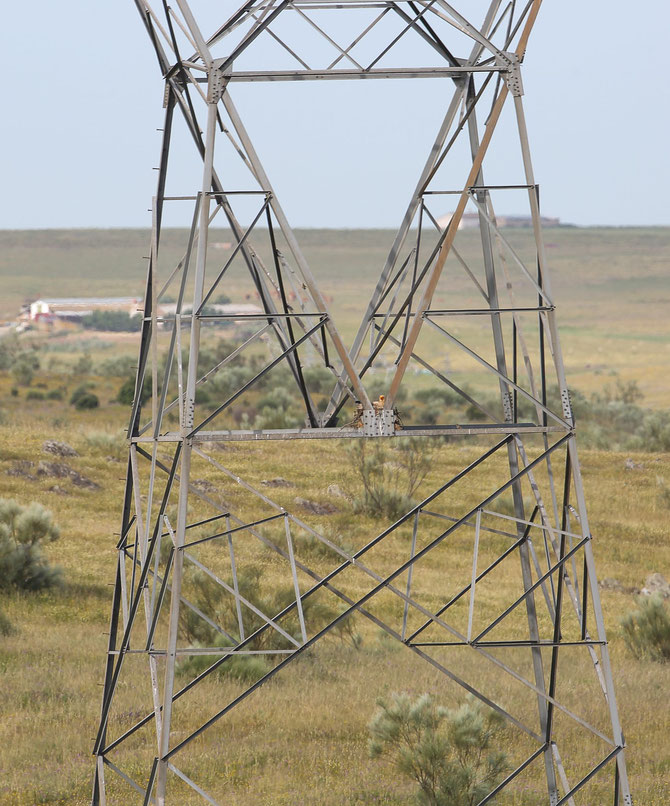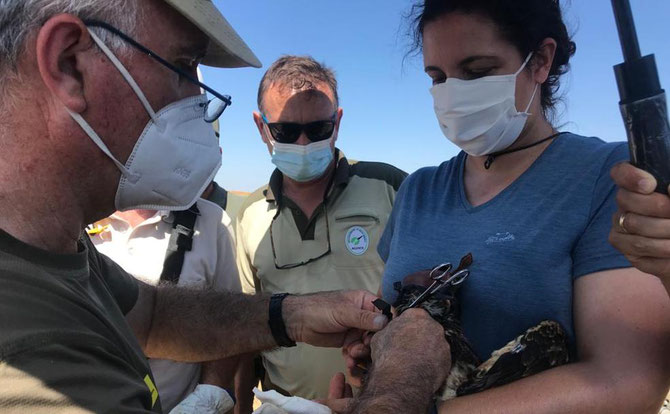
An unprecedented event recently occured in the northwest of Extremadura —.an Egyptian Vulture pair successfully bred on a transmission tower (also called pylon), which is an unusual nest site for the species. This nesting is the first of its kind for this species!
Successful Egyptian Vulture nesting on a pylon
Usually, Egyptian Vultures nest high in caves or on cliff ledges. But, a breeding pair made an exception in Extremadura as they built their nest on a transmission tower owned by Red Eléctrica de España near the river Tagus. After a couple of months of being busy during the breeding period, the Egyptian Vulture pair welcomed their chick! This is the first time that an Egyptian Vulture chick hatched on a nest built on a pylon in Spain, but also in Europe. Perhaps it is the first time in the world as never before has a similar case been recorded. “In our country a few years ago, a case of nesting of Egyptian Vultures in another tower was recorded, but successful reproduction had never been certified until the recent case in Extremadura”, says Angel Sanchez from the Junta de Extremadura.

Coexistence of energy infrastructures and birds
This finding is a step forward promoting the symbiosis of birds and energy infrastructures. Collaborations between conservationists and energy operators are becoming more and more frequent and are essential in the protection of soaring birds like vultures. Large birds of prey often breed in such towers, which allows them to have a clear viewpoint and offers them a safe refuge as they prevent other predators from climbing up to the nest. A significant example is the case of Ospreys in Cadiz. Since 2011, Red Eléctrica de España has been participating in a project run by the Migres Foundation and Junta de Andalucia to recover this species, which has not reproduced in the region since the 1980s. To date, the result is very positive as 30 chicks have already fledged from these nests.
Electrocution and collision are significant threats to vultures and other bird species when pylons and cables don’t have adequate isolation or markers. It is essential to secure existing hazardous energy infrastructures and collaborate with the energy sector to ensure the correct measures are executed during the planning and implementation of new energy infrastructure to minimise risks imposed to soaring birds and vultures, like the VCF and its partners do in several LIFE-funded and MAVA-funded projects. Operators like Red Eléctrica de España significantly support conservation efforts, always taking into account the protection of biodiversity when they are developing new infrastructure.
The Junta de Extremadura and Red Eléctrica de España have adopted safety measures to avoid human disturbance to the breeding pair and allow the chick to develop normally.
Tagging the Egyptian Vulture chick

On Monday 13 July, technicians from Consejería para la Transición Ecológica, Red Eléctrica de España (REE) and Ministerio para la Transición Ecológica equipped the young chick with a GPS tag to follow its movements and study its behaviour in the upcoming years. So far, the Junta de Extremadura marked 16 Egyptian Vultures that winter in Extremadura each year to monitor their movements, which allows them to study the use of the territory of various breeding pairs in the Monfragüe National Park and its surroundings.
The technicians tagged the chick a few days before it began flying, since it can migrate to Africa and remain there in its early years, or be one of the Egyptian Vultures that winters in Extremadura. If it successfully breeds in the future, what type of nest site will it choose — a similar structure like its parents or in a typical site like a cave? Only time will tell.
Egyptian Vultures in Spain and Extremadura
All European vulture species live in Spain, Europe’s vulture stronghold. The Egyptian Vulture has two subspecies in Spain; the Peninsular subspecies is currently listed in the Spanish Catalogue of Threatened Species in the category of Vulnerable and the Canary Islands subspecies in the category of Endangered. Spain is home to the largest European population of Egyptian Vultures and is a global stronghold for the species with 1,490-1,567 pairs. Extremadura is an important region for Egyptian Vultures, hosting a stable population of approximately 175 pairs. It is also home to an atypical wintering population of the species that totals over 100 birds and is possibly the only one in continental Europe.
This is indeed great news and a significant step in promoting the collaboration of energy operators and conservationists. The VCF will continue to tackle the threats of collision and electrocution by working together with its partners and the energy sector.




